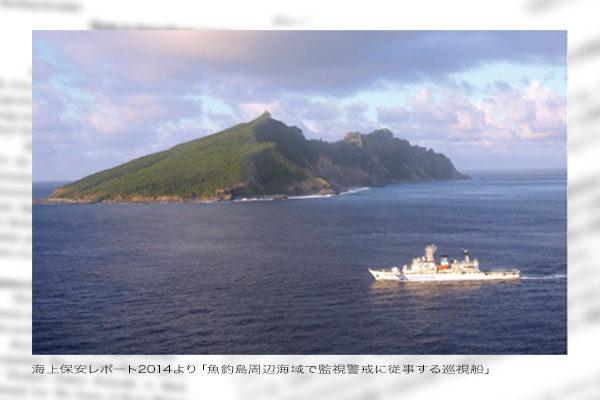The Japanese Self-Defense Forces (SDF) may conduct hazard shooting against foreign government ship crew members trying to land on the Senkaku Islands in the East China Sea, Defense Minister Nobuo Kishi said in late February, with an eye on China Coast Guard (CCG) ships’ frequent incursions into Japan’s territorial waters around the Senkakus.
The Japanese law system lacks provisions about what the SDF can do in the so-called gray-zone situation between a peacetime for “maritime security action” and a wartime for “defense operation.” Accordingly, China has adopted a strategy to pinpoint this weak point in recent years. The process was: first, Beijing integrated maritime law enforcement agencies into the CCG in 2013. Second, the Chinese Communist Party’s Central Military Commission took the place of the State Council as an administrative organization to control the CCG. Third, Beijing on February 1 put into effect the CCG law to allow it to use force against foreign ships in waters under China’s jurisdiction.
Japan refrains from adventurism
Defying a ruling in 2016 by an international arbitration that China’s historic rights claims over the South China Sea have no lawful effect, China has effectively controlled the sea and used force against Vietnamese and Philippine ships. Therefore, the enforcement of the CCG law to stipulate the potential use of force is thought to be designed to effectively control the East China Sea, specifically the Senkaku Islands.
In one month after the enforcement of the CCG law, a total of 14 CCG ships made incursions into Japan’s territorial waters around the Senkakus on six days, after eight ships did so on three days in December and six ships on three days in January. The monthly number of such days and such ships thus doubled in February. Nevertheless, the Japan Coast Guard has insisted to respond to such Chinese actions with its police power and refused to support the expansion of relevant SDF roles apparently from sectionalism.
Asked why the 2015 peace and security legislation did not include a “territorial security operation law” for the SDF to address a gray-zone situation, then Japanese Prime Minister Shinzo Abe told the parliament that China could take advantage of such law for holding Japan responsible for escalating a conflict to the military level. Behind the statement might have been the intention of the United States as Japanese ally to refrain from being involved in a Japan-China conflict over the unmanned Senkaku Islands. The entrapment fear for the U.S. was that explicit U.S. security guarantees regarding the Senkaku Islands might increase Japanese “adventurism,” according to a paper titled “Ameliorating the Alliance Dilemma in an Age of Gray-Zone Conflict—Lessons Learned from the U.S.-Japan Alliance” on the autumn 2020 issue of the U.S. Naval War College Review.
SDF should have territorial security missions
Japan may have two legislative approaches to respond to Chinese aggression. One is the enhancement of police activity such as admitting the power of hazard shooting. The other is the relaxations of conditions for the SDF’s defense operations to give the SDF “territorial security” missions.
To counter China’s three warfare – legal, media, and psychological, Japan should appeal to the international community through the same three warfare.
Fumio Ota is a senior fellow and a Planning Committee member at the Japan Institute for National Fundamentals. He is a retired Vice Admiral of Japan’s Maritime Self-Defense Force.


